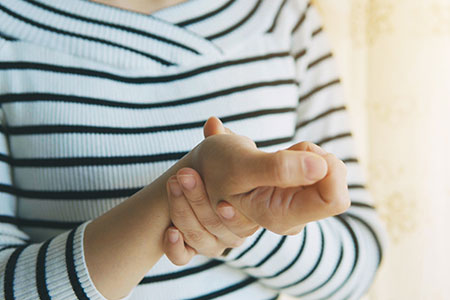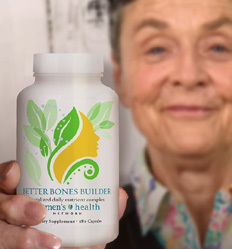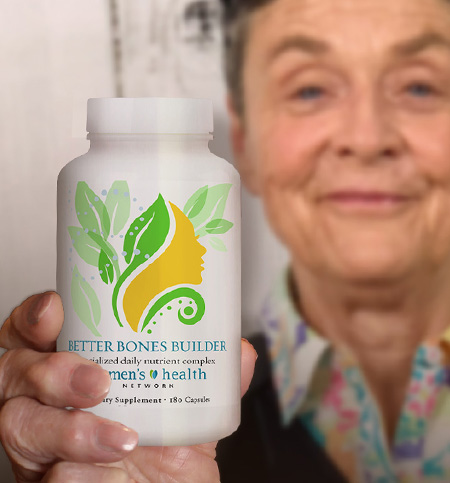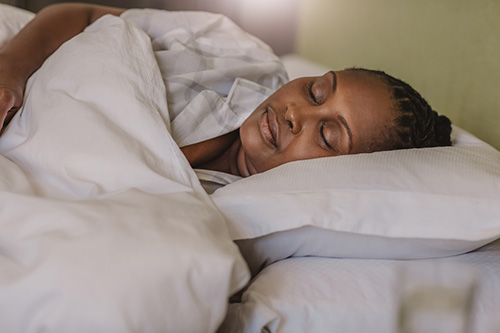Authored by Dr. Susan E. Brown, PhD
Causes of joint pain and stiffness
Joint pain, aches, swelling or stiffness can occur at any age and may affect almost any joint, including the knees, hips, neck, back, elbows, ankles, feet, toes, hands and fingers. Joint pain and sometimes swelling are commonly associated with:
- Previous injuries
- Repetitive use and/or overuse
- Arthritis, especially osteoarthritis
- Hormonal imbalances, both reproductive or adrenal (stress)
- Weight
- Chronic illness and infections

Joint discomfort can include stiffness, achiness, soreness, burning, throbbing or a “grating” sensation. Women also report loss of flexibility and mobility at the affected site, which may also feel swollen and hot. Pain may be persistent or it can come and go. Joint pain can sometimes be traced to bursitis, gout, carpal tunnel syndrome or muscle injury, so it’s important to rule those out early on.
For many women, inflammation or autoimmune disease can produce painful, stiff joints. Osteoarthritis is probably the best-known form of inflammation of the joints, but some infections, including Lyme disease and Covid-19, can cause joint pain and swelling, too. Chronic autoimmune diseases that cause joint pain include rheumatoid arthritis, lupus and psoriasis.
Is your joint pain caused by osteoarthritis?
Joint pain in women in perimenopause or menopause is frequently diagnosed as osteoarthritis. Conventional practitioners tend to offer two treatment paths: prescribing increasingly stronger drugs for pain, or waiting until the problem gets bad enough that surgery is required. For most of us, neither approach is acceptable.
While many women first notice this issue during midlife when reproductive hormones fluctuate naturally, joint pain is not an inevitable sign of aging — it’s more likely a signal that something is triggering inflammation that affects the joint. It could be an injury (especially repetitive use injury, like carpal tunnel syndrome) directly affecting the painful joint, or it could be a system-wide inflammation that’s manifesting as joint pain. Either way, you have an excellent opportunity to find joint pain relief if you address that inflammation.
Even if your joints are seriously deteriorated from lifelong wear and tear — meaning, cartilage, tendons or ligaments are damaged or missing, or you have bone degeneration or bone spurs — there are natural steps you can take to quiet down inflammation. But it is important to take action sooner rather than later.
What does inflammation have to do with joint pain?
Chronic inflammation is the fire that burns beneath most kinds of joint aches and pains. A healthy immune system triggers the inflammatory response when it needs to deal with occasional threats like injury or infection. But in many women, the inflammatory response stays switched on indefinitely. This chronic, low-grade inflammation gradually tears down tissues — including those in your joints — and prevents cell regeneration and repair.
Chronic inflammation can be fueled by a diet high in refined carbohydrates, fried and fast foods, and sugars. A high-carb diet promotes elevated levels of insulin, which spreads inflammation. On top of that, women may have undiagnosed allergies or sensitivities to certain foods that contribute to inflammation when those foods are eaten.
For some women, autoimmune disease — where the immune system misidentifies the body’s healthy tissues as a threat to be attacked — leads to joint deterioration and pain. For women with autoimmune disorders, limiting opportunities for the immune system to get “riled up” is crucial, and that means reducing overall inflammation in the body.
Factors that set off the chronic inflammation process include:
1. Joint pain and hormonal imbalance
Many women first report joint pain when they are in perimenopause or menopause. Midlife hormone shifts, especially fluctuating estrogen levels, can have a deep impact on your joints. Since estrogen has an anti-inflammatory effect in the body, as it declines naturally it can increase the symptoms of chronic inflammation, including joint pain. If you have joint pain and PMS, or symptoms of perimenopause or menopause, find out more about restoring balance to your reproductive hormones.
2. Joint pain and adrenal stress
Cortisol, the hormone released in response to stress, works as an inflammatory agent, which is usually okay — if you’re experiencing a relatively short episode of stress. But when you have sustained stress — the kind many of us are experiencing — it can cause inflammation to spread and/or become chronic. If you have joint pain and high stress, find out more about restoring balance to adrenal hormones.
3. Joint pain and earlier injuries
Previous joint injuries can be ground zero for chronic inflammation, especially if the injury never healed well. Joint pain and stiffness in the area years later can occur due to chronic inflammation. Sometimes, bone spurs may develop in joints where a tiny bone fracture is healing or where tendonitis (inflammation of a tendon) has been a recurring problem — think repetitive motion injuries like carpal tunnel or tennis elbow. These spurs can cause sharp pain when they press against soft tissues or nerves.
4. Joint pain and weight
Women who are overweight have much higher risk of osteoarthritis, most often in the knees, because the extra pounds place additional stress on the knee joint. Extra body fat in general can lead to additional inflammation and joint pain at any location.
5. Joint pain and infections
Most of us are familiar with the “aches and pains” of the flu, and we know that these joint pains go away when we recover. But some infections leave long-lasting pain in joints. Lyme disease is one well-known source of chronic joint pain and swelling. We’re also learning that chronic Covid-19 or “long Covid” can produce lasting joint pain.
Both Lyme and Covid-19 are sometimes hard to identify — Covid’s symptoms aren’t always obvious, and the “characteristic” bullseye rash of Lyme disease only happens in some people, not all. But just as with other sources of joint pain, the systemic inflammation from either infection needs to be dealt with to reduce joint pain.
Natural approach to joint pain
Resolving joint aches and pains at their source means addressing the chronic inflammation process that’s underway in your body. We recommend a combination approach that includes:
- Lifestyle changes that encourage stress relief can help regulate cortisol levels and reduce your inflammatory burden. Whether it’s exercise, meditation, taking a natural adrenal support supplement to tame high cortisol or ensuring that you get adequate sleep, all of these steps to calm your mind and relax your body will help tamp down the fires of inflammation.
- Adding antioxidants in your diet to help cut down on the oxidative effects of diet and other factors. Antioxidants are natural compounds found in food, such as Vitamin C, Vitamin E and beta-carotene, that bind to damaging free oxygen molecules and prevent them from doing harm to tissues. Get more antioxidants from supplements and from foods that contain them naturally.
- Eating more “alkalizing” foods to help offset foods that are acid-forming in your body. Alkalizing foods are primarily unprocessed whole fruits and vegetables, nuts and seeds — all the foods you know you should eat more of (the same ones that contain antioxidants!). The list of acid-forming foods parallels that of inflammatory foods pretty closely — fried and fast foods, sugary sweets and white flour foods.
- Enjoying gentle exercise to help keep the joints flexible and lubricated. Even when your joints hurt, it’s crucially important to keep them moving. Consider slow, calming practices like yoga, t’ai chi and walking. If you’ve been injured, consider consulting with a trained physical therapist, who can help you find exercises that will stretch and strengthen the soft tissues around the injured joint for better support.
- Consider ways to support better bone health and reduce bone deterioration from inflammation, especially if you have sharp pain related to bone spurs.
- Protect yourself from infections known to produce bone pain, such as Lyme disease. Wearing long-sleeve clothing in the outdoors and checking carefully for ticks is a must!
The sooner you take action to improve your joint health, the better. For most joint health issues in women, taking the opportunity you have to improve how you feel now lowers the chance of things shifting the other way in the future.












